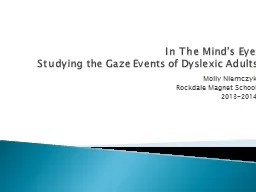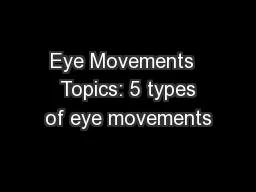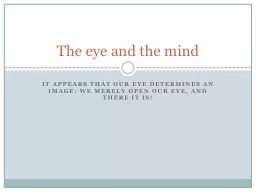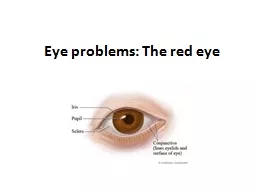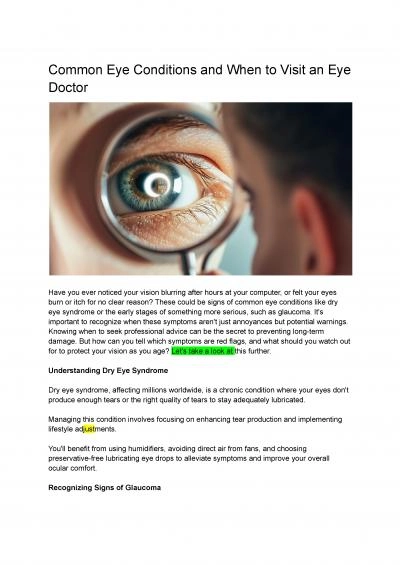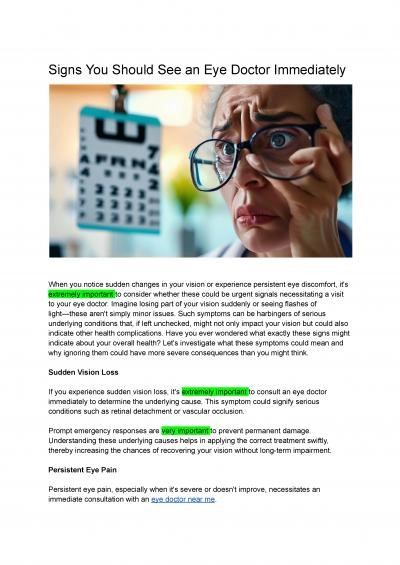PPT-In The Mind’s Eye:
Author : karlyn-bohler | Published Date : 2016-03-31
Studying the Gaze Events of Dyslexic Adults Molly Niemczyk Rockdale Magnet School 20132014 INTRODUCTION Dyslexia impaired ability to understand written language
Presentation Embed Code
Download Presentation
Download Presentation The PPT/PDF document "In The Mind’s Eye:" is the property of its rightful owner. Permission is granted to download and print the materials on this website for personal, non-commercial use only, and to display it on your personal computer provided you do not modify the materials and that you retain all copyright notices contained in the materials. By downloading content from our website, you accept the terms of this agreement.
In The Mind’s Eye:: Transcript
Download Rules Of Document
"In The Mind’s Eye:"The content belongs to its owner. You may download and print it for personal use, without modification, and keep all copyright notices. By downloading, you agree to these terms.
Related Documents

